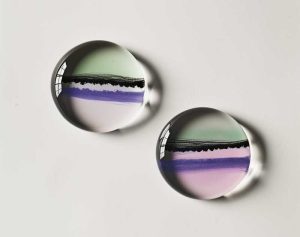A Guide to Shipping, Storing, and Handling �鶹��ý���� in Cold Environments
Aqueous coatings, integral to the graphic arts industry, boast versatility in their thermoplastic or thermosetting formulations, whether in solution or emulsion polymer blends. Predominantly water-based, these coatings contain approximately 60% water along with various property-enhancing components. Storing and handling such aqueous coatings in cold temperatures, especially during winter, requires a nuanced understanding to preserve their efficacy. In this comprehensive guide, we delve into the best practices for safeguarding the quality and performance of aqueous coatings while navigating the challenges posed by sub-freezing temperatures.
Winter Shipping and Inspection of �鶹��ý����:
When receiving an order of aqueous coating during winter, the receiving department must inspect the shipment promptly. Any damaged drums or kits should be reported to the delivery truck driver before departure, a crucial step to prevent potential freezing issues.
Winter poses a unique challenge to shipping high water content aqueous coatings, especially with unpredictable cold snaps across the United States. Precautionary measures include scheduling shipping to avoid coatings sitting on cold trucks over weekends, utilizing heated shipping services to maintain a minimum temperature of 50°F, and employing freeze indicators on drum lids.
Freeze Indicators and Handling Precautions:
Manufacturers take precautions against freezing threats by using freeze indicators that turn red when exposed to freezing temperatures. While a blown indicator doesn’t necessarily mean the coating is compromised, it signals potential exposure to freezing temperatures and requires immediate attention.
If doubt arises about the coating’s integrity, a digital temperature probe can verify its temperature. If compromised, thaw the container, mix the coating, draw a sample, and send it to the coating supplier for evaluation. It’s crucial not to use the coating until advised otherwise.
Storage Temperature and Viscosity Management:
Aqueous coatings should be stored at room temperature (20-22°C, 68-72°F) to ensure a six-month shelf life. Freezing must be avoided at all costs. Temperature plays a key role in the viscosity of aqueous coatings, and prior to use, coatings should be stirred thoroughly using air or electrically powered mixers.
Connecting coatings to the pumping system for circulation to the coater warms them, simulating a running condition. Viscosity checks post-mixing determine if water adjustments are needed, bearing in mind that water additions reduce coating solids, affecting the dry coating film’s thickness.
Monitoring and Safety Practices:
Monitoring aqueous coatings for smooth operation involves setting up the coater to the manufacturer’s recommendations. The “kiss impression” technique, regular drum monitoring, and diaphragm pumps for circulation ensure efficient coating application.
Aqueous coatings must be handled with care to avoid skin and eye contact. Safety precautions include wearing protective clothing, gloves, and glasses. Any spills must be promptly cleaned, and after a run, thorough equipment cleaning is essential, followed by proper disposal of empty containers and wash water in accordance with local regulations.
Conclusion:
Successfully navigating the challenges of shipping, storing, and handling aqueous coatings during winter demands a comprehensive approach. By adhering to these best practices, industries can safeguard the integrity and performance of aqueous coatings, ensuring their efficacy across diverse surfaces, even in the harshest winter conditions. For more, specific insights into handling aqueous coatings in cold environments, please read �鶹��ý����’s article “Storing and Handling �鶹��ý���� in Cold Temperatures.”








